In this episode of the Ask Andrew podcast, Kellen Ainey is joined by Andrew Sleigh from Sprott Money to explore why silver may be one of the most undervalued assets right now. With the gold-to-silver ratio sitting around 100:1, Andrew explains what this historic imbalance means for investors and why silver could dramatically outperform gold in the near future. They also discuss where the gold price and silver price are headed, what could trigger a shift in the ratio, and why physical precious metals remain a safer long-term play compared to mining stocks or digital assets like Bitcoin. Essential listening for any investor in uncertain times.
Gold To Silver Ratio Highlights Opportunity To Buy Silver
Andrew Sleigh of Sprott Money emphasized the critical importance of the gold to silver ratio currently hovering around 100 to 1, calling it a prime opportunity for investors. According to Sleigh, "It tells precious metals investors that silver is dramatically undervalued. So there's a lot more gain there left to be had." He compared the current cycle to past economic depressions where the ratio significantly tightened, stating that in prior depression cycles, the ratio dropped to as low as 15 to 1. Based on that historical precedent, he added, “At 100 to 1, if you buy 100 ounces of silver... when we get down into that 15 to 1 ratio... that means the silver investor will have the option... to convert their 100 ounces of silver for six and a half ounces of gold.”
Sleigh is adamant that the tightening of this ratio will happen primarily due to the increase in silver spot price, rather than a drop in gold. He stated, “Mostly, I believe it's going to be Silver Rising... gold doesn't have to really go anywhere and once silver goes to 150 now you're talking about... 25 to one or 30 to one.” These comments reflect a strong bullish sentiment on silver’s performance in the coming years.
Factors contributing to this shift include a mix of economic and market influences. Sleigh warned of manipulative practices by bullion and central banks, saying, “the bullion banks, central banks... are shorting the heck out of silver to try and suppress the price while they go long buying as much physical as they can.” He predicted an imminent end to this manipulation, “we go to bed one night at $50 an ounce and we get up the next day and it's a hundred or 200.” This could be a defining moment for silver investors.
Why Now May Be The Best Time To Buy Gold
Despite gold holding at historically high levels—around $3,300 USD—Andrew Sleigh believes there is still plenty of upside. “It's only going to continue to go higher because it's telling us that the currencies are failing,” he asserted. Pullbacks, according to Sleigh, are a natural occurrence in bull markets. He referenced an analyst who noted, “bull markets... do their best to shake the weak hands out as they go up... to entice people to sell their holdings.”
Sleigh encouraged investors to remain committed: “You really need to hang on until the end... these temporary pullbacks are just a natural course of the action.” He stressed that buying gold now, even near its highs, is a safeguard against fiat currency failure. He remains convinced that the gold market has not yet peaked and that it will continue its upward trend as global economic instability increases.
When comparing gold and silver, Sleigh was clear that silver offers more room to grow given the current gold to silver ratio. However, this does not diminish the value of owning gold. “Gold’s got far more to go... but because of the ratio of 100 to 1, it’s a silver play all day long,” he said, illustrating that both metals serve essential roles in portfolio preservation.
For those interested in purchasing physical gold, visit Sprott Money's gold page. To understand more about gold's role in economic uncertainty, refer to this World Gold Council report.
Gold Prices Fail To Boost Mining Sector Performance
Though gold spot prices have reached record levels repeatedly, the mining sector has not mirrored this bullish trend. “The miners are just not going anywhere... even though we've had gold reach all-time new highs,” Sleigh noted. He expressed confusion over this underperformance, stating, “I don't even know if Eric Sprott knows why. I think he's scratching his head on this one too.”
Sleigh explained that while he doesn’t actively follow mining stocks, he warns against overexposure to them. “I would not want to be holding a hand full of mining stocks unless I had a lot of money... in my gambling pool,” he said. Instead, he advocates for a portfolio primarily built on physical metals. “If people are exposing themselves to too much of a leverage on mining shares... they should be looking at paring that exposure down.”
He emphasized that even industry giants like Rick Rule and Eric Sprott maintain physical holdings as their core investments and advised everyday investors not to overextend. “You should be reversing that ratio. Whatever you can afford to lose is what you should put in the mining stocks,” he cautioned. To explore the performance of precious metals miners, Sprott Gold Miners ETF may provide useful insights. Also, see Morningstar's mining sector analysis.
Physical Metals Versus Digital Gold And Bitcoin
On the topic of Bitcoin and digital gold, Sleigh remains highly skeptical. “From an inflation head, it's never been proven. So that's a question mark,” he said. He likened investing in Bitcoin to trusting an untested heart surgeon, remarking, “the heart surgeon hasn't taken the test yet... So gold as some kind of gold back Bitcoin... has not been tested at all.”
He stressed the importance of tangibility in precious metals investment: “Put it in my hand. What does it look like? What's it feel like? What's it weigh?” His point underscores the physical assurance gold provides compared to the digital vulnerability of cryptocurrencies, which may be inaccessible in times of financial collapse. When it comes to serious investment, Sleigh does not mince words: “As far as any serious amount of money at all, all I see there is extreme risk.” He advises investors to treat digital assets as speculative, allocating only what they can afford to lose—no more than 5% of a portfolio. For more on physical gold versus digital alternatives, read Sprott Money’s take on gold vs crypto. Additional reading is available from Forbes on Bitcoin vs Gold.
Interest Rates, Central Banks, And Their Impact On Gold
Addressing upcoming interest rate decisions, Sleigh admitted he was unsure if a cut was imminent, but warned of the consequences when it eventually comes. “Cutting interest rates is QE... and that's more debt, more printing,” he said. According to Sleigh, this will ultimately weaken fiat currencies and fuel a rise in both gold and silver prices.
Sleigh explained how quantitative easing is deceptive. “Stock market going up is actually the purchasing power of your dollars going down,” he stated, illustrating that inflation distorts real gains. As governments manipulate markets through artificial stimulus, he warns, “sooner or later... we have hyperinflation that starts.” He described the broader pattern: "QE is good for the stock market... but it is an illusion... they start losing faith in the currency.” As confidence deteriorates, gold and silver become the last refuge for protecting wealth.
Canadian Politics, Trade Tensions, And The Future Of Precious Metals
Sleigh gave a grim forecast regarding Canada’s future under new leadership. “Carney is a globalist... he has got a long list of things... He's the grandfather of the carbon tax... ESG... destroy the economy.” He warned that incoming policies will strain Canadian sovereignty and likely deepen trade tensions with the U.S., creating more uncertainty.
Trade friction, according to Sleigh, increases demand for safe haven assets like gold and silver. “Uncertain times, people do go to safe havens,” he said. He also highlighted a looming threat to national unity with Alberta moving toward separation and exiting the CPP program, predicting, “the CPP program will fail in five years.”
He cautioned Canadians about banking vulnerabilities, citing examples of clients unable to access funds. “Banks just don’t have it... they’re insolvent... clients suing credit unions... they lose every single time.” This systemic risk further reinforces his view that the only reliable protection is physical gold and silver.
Collapse Of Fiat Systems And Urgency To Invest In Physical Silver And Gold
Sleigh painted a stark picture of the global monetary future. “With the European Union announcing their CPDC deadline for October... they have to destroy the euro prior to that,” he revealed. This systemic reset, driven by central banks, aims to force the public into central bank digital currencies by collapsing traditional financial structures. “The Fed is like, you know, at the heart of it,” Sleigh explained, warning that more money printing strengthens central banks’ grip. He criticized how those holding physical gold are labeled hoarders, stating, “you could have millions of dollars in the bank and that’s called savings... but more than 10 ounces is considered hoarding.”
Finally, he warned of coming restrictions on personal banking freedoms. “You want more than 3,000 euros? Notify the financial authority of Spain... or face a fine of 150,000 euros,” he said. These developments serve as urgent signals to exit the system before it’s too late. Sleigh concluded, “I think anytime after the end of June is very precarious to have assets exposed to the system.” Investors seeking safety should strongly consider moving into physical metals now.
Ready to protect your wealth? Start investing in gold and silver today before demand surges beyond supply.
Kellen Ainey (00:02): Hi everyone, and welcome back to the Ask Andrew podcast. Once again, I am joined here today by Andrew Sleigh. Welcome back, Andrew.
Andrew Sleigh @ Sprott Money (00:10): Thank you very much for having me, Kellen. It's good to be back.
Kellen Ainey (00:13): No worries whatsoever. In these trying times, a lot of people would like to pick your brain, so we're more than happy to have you on anytime. With that being said, why don't we jump right into it with our first question? With the gold-to-silver ratio hovering around 100 to 1, what does this tell precious metal investors, and what does this mean for silver specifically?
Andrew Sleigh @ Sprott Money (00:36): It tells precious metals investors that silver is dramatically undervalued, so there's a lot more gain left to be had. And for silver investors, the best strategy would be to continue to pile in, because the cycle we're in right now resembles a Great Depression-type cycle. In the depression cycles of the past—there have been three others—the ratio of silver to gold has dropped down close to 15 to 1, give or take a couple.
At 100 to 1, if you buy 100 ounces of silver—which is roughly the equivalent of an ounce of gold—when the ratio gets down to 15 to 1, maybe in a couple of years or so, how many times does 15 go into 100? Roughly six and a half times.
So that means a silver investor will have the option, if gold is available, to convert their 100 ounces of silver into six and a half ounces of gold. No matter what the pricing is—whether gold is $50,000 or $10,000—it doesn’t matter. Once the ratio is 15 to 1, silver will be priced accordingly. You'll be able to get six and a half times more gold for your silver.
Kellen Ainey (02:03): When we’re talking about the tightening of the ratio, which side do you see this happening on? Do you see silver rising in value, or gold dropping? I think I know the answer, but I’d like to hear you articulate it.
Andrew Sleigh @ Sprott Money (02:18):
Mostly, I believe it's going to be silver rising. Gold could pull back a little bit, but I don’t think that’s going to be the major factor. It’s more likely that silver goes up. Right now, at 100 to 1, all silver has to do is go to $100, and that brings us to a 50 to 1 ratio. Gold doesn’t need to move. If silver goes to $150, you're talking about a 25 to 1 or 30 to 1 ratio. It doesn’t take much for silver to move and change that ratio.
Kellen Ainey (02:57): What factors could impact the ratio tightening? Trade, economic, geopolitical, or industrial factors?
Andrew Sleigh @ Sprott Money (03:09):
All of those are in play and have been for years, yet silver is still where it is.
I think when the crowd—especially the retail crowd—wakes up, and the manipulation of metals markets starts to break down (I’m talking about bullion banks and central banks shorting silver to suppress its price while buying physical), then it’s game over. When the bridles are taken off silver, it will move dramatically.
We don’t know when that will be. It could be one of those cases where we go to bed and silver is $50, and wake up and it's $100 or $200. I could see some pretty strong moves before the end of the year.
Kellen Ainey (04:18):
Moving more so onto gold, with gold holding roughly at $3,300 USD, do you feel like it's still a good time to buy gold even though it’s holding close to all-time highs?
Andrew Sleigh @ Sprott Money (04:33):
It's only going to continue to go higher because it's telling us that the currencies are failing. So any pullback is just natural. I heard this term earlier this morning from an analyst, and he said that all gold and silver bull markets do their best to shake the weak hands out as they go up.
There are pullbacks to entice people to sell their holdings. You really need to hang on until the end. So these temporary pullbacks are just a natural course of the market. Gold will have its breather, and it's probably not going to last that long. Then it will continue climbing, take another breather later. Sooner or later, silver’s going to wake up and be the racehorse of the day. Better to buy it while it’s still in the stable.
Kellen Ainey (05:48):
So even though it’s not a bad time to buy gold, you're suggesting silver is the better play based on the ratio?
Andrew Sleigh @ Sprott Money (05:55):
Yeah, that was only really answering between the two of them. Gold’s got more room to go. But because of the 100 to 1 ratio, it’s a silver play all day long.
Kellen Ainey (06:08):
Got it. So with gold holding at $3,300, what does that mean for the mining sector specifically?
Andrew Sleigh @ Sprott Money (06:19):
Well, I don’t follow miners that much, to be perfectly frank. All I keep hearing is that the miners are just not going anywhere. There's the odd winner here and there, but they seem to be asleep—even with gold hitting new highs repeatedly. It doesn't seem to be reflected in mining stocks. I don’t know why. I don’t even know if Eric Sprott knows why. I think he's scratching his head too.
I know physical metals lead and the miners follow—but how long does that take? Gold’s been hitting new highs for a year and a half, yet most gold mining stocks have been asleep. I'm not following them firsthand, so I can’t be specific. But I’m glad I’m not holding a bunch of mining stocks. Unless you’ve got a lot of money and want to put some into your gambling pool, keep your core wealth in the physical.
If people have a big chunk of their portfolio in mining stocks, they should consider paring that down. Follow what people like Eric and Rick Rule do, but don’t try to emulate them—they’ve got money in both markets. Some clients I’ve seen had 80% of their portfolios in mining stocks, thinking they’re mimicking the pros. I tell them to reverse that ratio. Put in mining only what you can afford to lose. Your core holdings should be in silver and gold.
Kellen Ainey (08:49):
What are your thoughts on Bitcoin as digital gold? What would you say to investors considering both assets as a hedge and a safe haven?
Andrew Sleigh @ Sprott Money (09:02):
As an inflation hedge, it’s never been proven. It's like going to a heart surgeon who's never performed surgery. Bitcoin hasn’t been tested in crisis. Gold has—it's been a monetary metal for 5,000 years. If I were to bet on one or the other, I’d put my money on the physical.
Gold-backed crypto is also unproven. If someone offers me a gold-backed Bitcoin, I want to see it—hold it. If it’s stuck on a laptop or exchange that might not be there when the system fails, I don’t want my money there.
Kellen Ainey (10:43):
Fair enough.
Andrew Sleigh @ Sprott Money (10:47):
Other assets like that are fine for 5% of your portfolio if you can afford to lose it. But for any serious money, I see extreme risk.
Kellen Ainey (11:11):
With the FOMC meeting tomorrow, many speculate the Fed will cut interest rates. Do you believe that? What impact would it have if they do?
Andrew Sleigh @ Sprott Money (11:29):
I don’t know if they’ll cut or not. I haven't been following it closely. But if they do cut, it's going to pump gold and silver. Rate cuts are quantitative easing—it means more debt, more money printing. It's more failure of the system.
They might try to be reserved about it, but eventually, they’ll work their way back to zero. That’s rocket fuel for gold and silver. It's destroying the value of the dollar—Canadian, U.S., whatever. Same worldwide.
Kellen Ainey (12:29):
So even though you’re unsure whether rates will be cut soon, if they are, it’s good for gold and silver but bad for the market overall?
Andrew Sleigh @ Sprott Money (12:37):
Yeah. QE is good for the stock market in the short term—it gives investors confidence. But it’s an illusion.
People think they’ve made money because the market goes up. But the truth is, your dollars are just worth less. You gain 10% in your portfolio, but you lose 10% purchasing power. It’s a sneaky way governments take wealth.
Eventually, this trend accelerates. The market surges upward, the dollar drops. People start to lose faith in the currency—and that’s when hyperinflation begins.
Kellen Ainey (14:11):
Shifting now to Canadian politics—with the federal election coming to a close, what do the results mean for the average Canadian? Should this impact their investment strategy?
Andrew Sleigh @ Sprott Money (14:28):
We have some really challenging times ahead for Canada. As I mentioned in our last podcast, I believed Carney would win. I also said in another interview that he was sent here to become Prime Minister—there was no way he was sent to lose. It’s too timely.
What does this mean? Without getting political, Carney is a globalist. He’s the grandfather of the carbon tax, the grandfather of ESG. He’ll push to shut down gas-powered cars and implement major changes to the economy. He played a public game with Trump recently and saw the Liberal party numbers rise sharply.
Kellen Ainey (16:06):
Yeah. I noticed that for some voters, their biggest concern was how he’d handle Trump—which seems like a bizarre basis for casting a vote.
Andrew Sleigh @ Sprott Money (16:22):
Exactly. That was all people focused on. Now they’ve voted him in, and we’ll see what comes. He’s invited the King to reaffirm our sovereignty, which raises questions. If we’re sovereign, why is the King opening Parliament?
Remember, Carney was Trudeau’s puppet master for the last eight years. Now he’s going to bring even more of that forward.
Kellen Ainey (16:58):
Well, that brings me to my final question. With Carney set to meet with Trump today, how would persistent trade tensions between Canada and the U.S. impact your outlook on precious metals?
Andrew Sleigh @ Sprott Money (17:35):
It will create more uncertainty—and during uncertain times, people seek safe havens like gold and silver. If trade tensions continue with more tariffs, people will feel it in their pockets.
There could also be political fallout. Alberta, for example, has already started talking about referendums and separation. Carney’s election just adds fuel. Alberta has even withdrawn from the CPP.
Kellen Ainey (19:05):
I saw an article yesterday—Carney said he’d crack down on U.S. apps in Canada. Many people see that as censorship, similar to Bill C-10.
Andrew Sleigh @ Sprott Money (19:30):
He’s as anti-journalist as Trudeau. He doesn’t like dissent. Even the CPP—Alberta wants their contributions back. I believe the CPP will fail in five years. Why are employers and employees paying thousands annually for a system that may not exist?
Kellen Ainey (20:39):
So it’s essentially an unsustainable program?
Andrew Sleigh @ Sprott Money (20:41):
Exactly. I’d rather take that $2,500 and put it into silver. Employers would rather save that expense too—10 employees means $25,000–$30,000 yearly for nothing.
Kellen Ainey (20:53):
And then it's an arm and a leg to even withdraw it later...
Andrew Sleigh @ Sprott Money (21:11):
It’s a total scam. I’ve said for 25 years I’ll never see a CPP payment. I’m 57 now and still believe that. I’ve paid into it my whole life and will likely never see a nickel.
Kellen Ainey (21:44):
So, final thoughts—with trade tensions growing and everything we discussed today, would now be the time to invest in silver?
Andrew Sleigh @ Sprott Money (22:12):
Absolutely. The system is coming apart. With the EU set to launch CBDCs in October, they’ll have to destroy the euro beforehand. That suggests a summer timeline for collapse. If it happens there, it happens here too.
I spoke with one of our writers about it. He agreed—no one wants CBDCs, so they’ll have to make people beg for it. That means collapsing the current system first. I’m advising clients to be cautious with assets in the system after June.
Kellen Ainey (23:49):
Do you feel like the U.S. central bank is on board with this, or is this more a European push?
Andrew Sleigh @ Sprott Money (24:14):
It’s global. The Fed is central to it. Lower interest rates give them more power. More debt = more central bank control. Gold and silver threaten that—they’re anti-debt, anti-bank establishment. That’s why they don’t like it.
FDR once said more than 10 ounces of gold was hoarding, yet millions in fiat is “savings.” They want us in the system they control.
Kellen Ainey (25:11):
Funny enough, I’ve had clients trying to buy 10–20 ounces of gold, and their banks are either blocking or dragging their feet. Is that systemic?
Andrew Sleigh @ Sprott Money (25:43):
On both sides—Canada and the U.S.—yes. I’ve seen people wait a month just to withdraw $100,000.
It’s not a lot of money, but banks don’t have it. It’s just digital numbers. If they’ve loaned out far more than they have in deposits, they’re effectively insolvent. One-bank towns are the worst—regardless of the brand.
Kellen Ainey (27:25):
That’s been my experience too.
Andrew Sleigh @ Sprott Money (27:37):
Credit unions are especially at risk. I have a client suing a credit union in Vancouver. They tried to pay him in installments—he refused. They delayed in court just to raise the funds. They lose every time, but it’s a delay tactic.
Kellen Ainey (28:34):
So they delay just to get the money together. That’s wild.
Andrew Sleigh @ Sprott Money (28:59):
It’s going to get worse. In Spain, you now have to notify the government if you want to withdraw more than €3,000. Over €10,000? You need 72 hours’ notice or face a €150,000 fine.
Kellen Ainey (30:07):
€3,000 is barely a mortgage payment.
Andrew Sleigh @ Sprott Money (30:14):
Exactly. It’s a sign the system is drying up. Eventually, it’ll be “Sorry, Kellen, you can only withdraw $300 this week.” That’s what happened in Greece. We think it can’t happen here—but it already is. It just hasn’t hit everyone yet.
Kellen Ainey (30:46):
Right.
Andrew Sleigh @ Sprott Money (31:12):
Another client withdrew a large amount—her account was closed. They labeled her “high risk.”
Kellen Ainey (31:23):
I’ve seen that too—sometimes they even question mental health. They’ll do anything to keep the money.
Andrew Sleigh @ Sprott Money (31:36):
Exactly. I asked a client, “Did they think you were high risk when you deposited that money?” The real reason? They’re scared she’ll withdraw again.
She requested cash. That forced them to scramble again. Banks hang themselves with more rope every time.
Kellen Ainey (32:50):
That’s it. Well, that’s all the questions for today, Andrew. I’m sure our viewers will appreciate your insights. Can you share the best way to reach you?
Andrew Sleigh @ Sprott Money (33:21):
Sure. Toll-free: 1-888-861-0775, ext. 230.
Email: deathofthedollar@sprottmoney.com
Or book a call using the link in the description for a 30-minute consultation.
Thanks, Kellen. Always happy to help.
Kellen Ainey (34:03):
Of course, Andrew. Always a pleasure. Talk soon. Take care.
Andrew Sleigh @ Sprott Money (34:07):
Thank you. You too.
Don’t miss a golden opportunity.
Now that you’ve gained a deeper understanding about gold, it’s time to browse our selection of gold bars, coins, or exclusive Sprott Gold wafers.
About Sprott Money
Specializing in the sale of bullion, bullion storage and precious metals registered investments, there’s a reason Sprott Money is called “The Most Trusted Name in Precious Metals”.
Since 2008, our customers have trusted us to provide guidance, education, and superior customer service as we help build their holdings in precious metals—no matter the size of the portfolio. Chairman, Eric Sprott, and President, Larisa Sprott, are proud to head up one of the most well-known and reputable precious metal firms in North America. Learn more about Sprott Money.
Learn More
You Might Also Like:




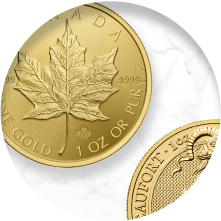

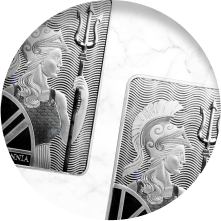
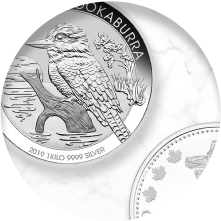


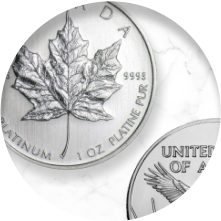

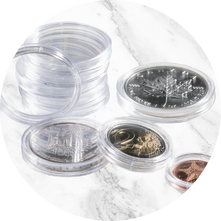
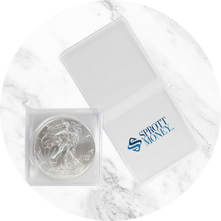



Share: